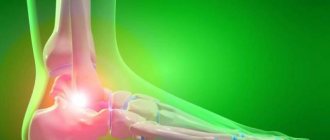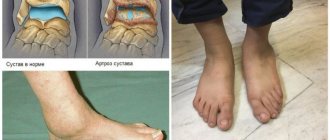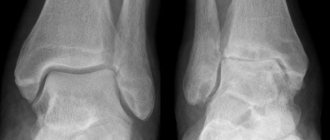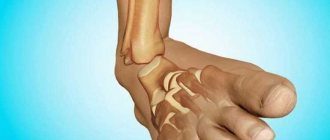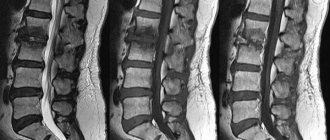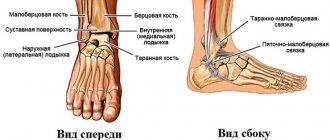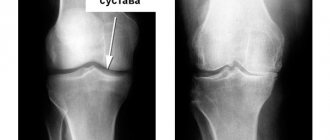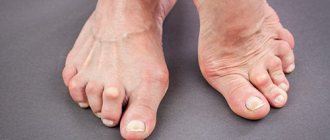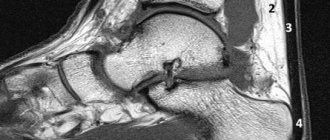What is "edema"
Edema is a concentration of blood plasma from lymphatic and blood vessels in the intercellular space. If swelling is an exceptional phenomenon for the patient, then there is no cause for concern. Sometimes the body responds this way to overheating or the effect of certain medications. Otherwise, such a symptom is considered a signal of serious health problems.
Causes
Joint swelling can develop due to a variety of circumstances - from minor injuries to serious degenerative pathologies of the musculoskeletal system.
Mainly these are:
- changes in the biochemical composition of blood plasma and tissue fluid;
- hormonal disbalance;
- increased capillary permeability;
- difficulty in the outflow of venous blood and lymph;
- violation of gas exchange and excretory function of the kidneys;
- congestion in case of heart failure;
- critical ischemia;
- arthritis and arthrosis;
- viral infection and inflammation;
- sedentary lifestyle, etc.
Classification
First of all, it is necessary to establish the nature of the edema. It can be false and true.
False edema is observed in myxedema, systemic scleroderma and obesity and has a specific feature: when pressed with a finger, there is no trace or pit left on the skin.
In a situation with true edema, the hole does not disappear for a long time, which indicates the free movement of fluid in the tissues. With local edema, fluid accumulates in an unhealthy area of the body.
Pathologies
Unfortunately, patients do not always rush to seek medical help when joint swelling occurs.
However, a visit to the doctor is required if:
- unpleasant symptoms persist for about a week;
- at the same time, redness of the skin and an increase in body temperature are noted;
- swelling developed after joint puncture.
Pain and swelling in the joints occur due to congenital anomalies, various injuries, inflammatory processes, and degenerative changes (age-related). What diagnosis can a doctor make:
- Phlebeurysm;
Deep thrombosis and thrombophlebitis of the saphenous veins (occurs after childbirth, surgery on the abdominal organs, with a tumor, leukemia and some other diseases);- Postthrombophlebitic syndrome;
- Lymphedema;
- Arthrosis;
- Arthritis;
- Gout;
- Osteoarthritis;
- Psoriasis;
- Rheumatism.
How does the disease manifest itself?
Reactive arthritis makes itself felt 1-3 weeks after the pathogen enters the body. Common precursors are acute respiratory, intestinal and urogenital infections.
General symptoms:
- Severe pain appears in the joint.
- The patient begins to limp sharply or cannot use the affected joint at all.
- Swelling, often redness and a local increase in temperature occur in the affected area.
- The general temperature rises.
- Weakness and loss of appetite are observed.
The appearance of more specific symptoms depends on the bacteria that have entered the body. Based on them, the main pathogen is determined.
For example:
- Urogenital infection is often accompanied by chlamydial infection. Clinical signs of cystitis and urethritis appear in boys, vulvovaginitis and vulvitis in girls.
- Intestinal bacteria aggravate common symptoms. Thus, the body temperature rises to 38 degrees or more, all joints begin to ache, the accumulation of a large amount of fluid in the joint area leads to its pronounced deformation, which leads to impaired mobility, and the adjacent tendons also hurt.
Diagnostics
One of the most important areas of the clinic’s work is the diagnosis of diseases manifested by edema. This makes it possible to detect any disturbances in the functioning of the musculoskeletal system and identify risk factors.
When conducting an initial general examination, the specialist pays attention to external deviations from the norm - swelling in the joint area, its nature and area of distribution.
To confirm the diagnosis, all necessary measures are prescribed, including:
- laboratory (blood and urine tests) diagnostics,
- Ultrasound of joints,
- MRI of joints.
The information content of hardware methods for studying all elements and tissues of articular joints helps to study in detail images of ligaments, tendons, cartilage, adipose tissue, bone marrow, blood vessels, etc.
Which doctor treats
When starting treatment, the patient should seek advice from an orthopedic traumatologist and rheumatologist.
IMPORTANT! Swelling or swelling in the joint area is an alarming manifestation that requires immediate consultation with a specialist.
If a person notices swelling or swelling once, after an injury or painful impact on the joint, then it is necessary to contact an orthopedic traumatologist at our center for immediate help in this situation. However, if the patient complains of constant pain and swelling in the joint area, he should visit a rheumatologist. Make an appointment with a qualified orthopedic traumatologist or rheumatologist at the Kuntsevo Medical and Rehabilitation Center to understand the causes of joint swelling and eliminate swelling!
Sign up
If your hands are swollen and your knees hurt...
There can be many reasons for the malaise. It is not always clear which doctor to consult with a particular ailment. Our expert will help you navigate.
In order to get a complete answer, you need:
- briefly outline the main symptoms;
- make the question as specific as possible;
— write a question in the comments under this article.
Question: My hands swell at night. It's hard to make a fist. The right hand is stronger for some reason. What could it be? Causes? Which specialist should I contact?
Swelling of the hands can be not only a subjective sensation, but also the result of a number of pathological changes in the body. The main reason is the retention of excess fluid in the tissues.
One of the physiological reasons for swelling of the hands in the morning is an uncomfortable position during sleep, when the hand is under the body and its weight presses on it. It can also be caused by tight loungewear. For example, an elastic cuff. All this leads to disruption of the outflow of lymph and venous blood from the limb and, as a consequence, to fluid retention in the tissues. But these reasons are easy to eliminate.
The second reason may be excessive fluid intake before bed. Especially alcoholic, sweet and salty drinks. In this case, the water-salt balance is disrupted and sodium is retained in the tissues.
It should be noted that many women experience swelling of the hands before the onset of menstruation, which is associated with an increase in the level of female sex hormones - estrogens, which also contribute to fluid retention in the tissues.
In addition to physiological reasons, there are also pathological changes in the body that are worth paying attention to:
- side effects of medications (carefully read the instructions for the medications you may be taking);
- allergic reactions (for example, to household chemicals);
- impaired renal function (can often be accompanied by swelling of the eyelids and face in the morning);
- endocrine disorders (for example, hypothyroidism, diabetes mellitus);
- cardiovascular diseases;
- overweight and obesity;
- inflammatory diseases of the joints of the hands (rheumatoid arthritis, arthrosis);
- space-occupying formations leading to disruption of lymph outflow;
— diseases of the mammary glands;
- anemic syndrome due to a decrease in hemoglobin in the blood;
— degenerative-dystrophic changes in the spine;
- injuries and physical strain on the hands.
To understand the cause of your condition, consult a general practitioner. Based on complaints, medical history, life history and physical examination, he will issue directions for the necessary tests and examinations, after which he will refer you to specialized specialists, whose consultation will be necessary to correctly resolve the issue of treatment.
____________________________________________________________________
Question: Good afternoon, please tell me who to contact. My knee hurts, the pain is not constant, but appears intermittently when you kneel and bend your leg. It hurts inside the front of the knee, sometimes it also pulls under the knee. There are no external changes, redness or swelling. It's not going away for the second week. There were no injuries or blows. It used to happen that there was a shooting in the knee, but that happened several times about 5 years ago and the pain went away within 5-10 minutes.
The knee joint is a complex joint that connects the femur, tibia and patella. The structure of the knee joint also includes intra-articular ligaments: the anterior and posterior cruciate ligaments and the transverse ligament of the knee. Between the articulating surfaces of the femur and tibia there are internal and external menisci.
It should be noted that in addition to their complex structure, the knee joints experience constant stress, which makes them very vulnerable. Even minor trauma, which the patient sometimes does not pay attention to, can lead to long-term pain.
Damage to the knee joint can be associated with excessive loads, poor posture, injuries, infectious agents, autoimmune diseases, metabolic disorders in the body and other reasons.
First of all, the patient needs to contact a general practitioner, who, based on complaints, anamnesis, and objective status, will determine the scope of additional examination methods and will subsequently be able to refer to specialized specialists: an orthopedist, neurologist, rheumatologist or osteopath.
____________________________________________________________________
Question: Hello! I often have a headache. Sometimes there is a ringing in the head and severe weakness. The condition lasts for several seconds. And as if during this period I begin to hear worse. Sounds come from afar, through the veil. What can you recommend? Thank you.
Headache is a symptom that can be a manifestation of a huge number of diseases. The cause of headaches can be high or low blood pressure, diseases of the spine, pathological changes in the cerebral vessels, diseases of the ENT organs, infectious diseases, chronic and acute stress, and space-occupying formations of the brain.
In any case, it is necessary to find the cause of this symptom, since headache is not an independent disease, but the body thus signals about a health problem.
First of all, you need to contact a neurologist who, based on the collection of complaints, anamnesis and objective status, will determine an examination plan, identify the main cause of the headache and prescribe treatment.
occupational therapist, head of the hospital “ Clinics for the whole family 1+1 answered your questions .
Photo depositphotos.com The author's opinion may not coincide with the opinion of the editors.
Types of treatment
The prescribed set of therapeutic measures is individual for each patient, but is invariably aimed at directly relieving swelling and ensuring normal blood circulation in the tissues and lymphatic drainage from the problem area.
Depending on the established cause of edema, the doctor prescribes drug therapy (taking tablets and injections), the use of medicinal ointments and creams. Non-invasive procedures are also of decisive importance - physiotherapy, kinesitherapy, diet therapy.
The clinic’s specialists are professionally proficient in modern, effective therapeutic and surgical methods for treating pathologies. Among them is the unique ACP SVF therapy - the latest treatment method that involves the use of adipose tissue stem cells.
Diseases that cause swelling
The causes of swelling of the ankle joint can be both external and internal factors, among which the most common are:
- Gout is a chronic, progressive disease in which joints become inflamed as a result of excessive accumulation of uric acid salts in soft tissues. In most cases, this disease is accompanied by swelling of the tissues and a feeling of acute pain when walking.
- Arthritis is a collective name for a number of pathologies (damages) of the joints, inflammatory or immune origin. As a result of this disease, the cartilage tissue begins to degenerate, ossify (as a result of friction of the deformed processes against each other) and as a result, an edema clinic appears. Most common among elderly people.
- Bursitis is an inflammatory disease of the synovial bursae, in which excessive accumulation of exudate occurs in their cavities.
- Psoriatic arthritis always accompanies a skin disease called psoriasis. In this case, arthritis of the toes provokes the formation of a small swelling in the ankle joint.
- Rheumatoid arthritis is a systemic connective tissue disease of autoimmune etiology. With this pathology, small joints are predominantly affected by the type of erosive-destructive polyarthritis.
- Plantar fasciitis is inflammation of a thick band of connective tissue on the bottom of the foot.
- Soft tissue infections that may be associated with viruses and bacteria (brucellosis, Reiter's syndrome, pseudotuberculosis, tick-borne borreliosis).
- Peripheral edema that occurs when microcirculation is disrupted.
- Overweight (fourth degree obesity).
- Disturbance in the lymphatic (drainage) system (elephantiasis).
- Septic arthritis - when infected, after traumatic penetration of bacteria into the cavity of the ankle joint.
Various injuries also lead to the development of swelling of the ankle joint:
- sprain;
- fracture;
- injury;
- dislocation.
Lifestyle recommendations
To prevent swelling and pain in the joints, experts recommend:
- minimize the static load on the musculoskeletal system, and also alternate between “standing” and “sitting” positions;
- stop regularly wearing high heels and wear comfortable shoes (even better - with orthopedic inserts);
- try not to sit with your legs crossed;
- get rid of excess weight, if any;
- do not lift heavy objects;
- exercise and lead an active lifestyle;
- adhere to proper nutrition (do not eat fatty foods and alcohol, minimize the consumption of salt and sugar);
- maintain water balance;
- do not overcool the joints;
- rationally distribute time for sleep, work and rest.
You may find it useful:
- Rehabilitation program for rheumatological patients
- Rehabilitation program for joint diseases
- Rehabilitation program after injuries
Common reasons
The ankle, hip and knee joints are the largest joints in the human body. They provide stability and mobility to the musculoskeletal system of our body.
The ankle joint is an anatomically complex formation. Three large bones are involved in its formation - the tibia and fibula, as well as the talus. Like all joints of the lower extremities, the ankle experiences large statistical and dynamic loads when walking, running and maintaining a vertical body position in space. For this reason, the joint is more susceptible to various pathological changes than others. Edema is the most common complication of a traumatic or inflammatory nature.
If a person notices signs of swelling of the lower legs, the reasons need to be determined as soon as possible. It could be as follows:
- Trauma in the leg area - bruise of any part of the leg, dislocation, fracture (even if it is an inconspicuous fracture of the toe), burns can also cause swelling;
- Prolonged stay in an upright position;
- Constantly wearing high-heeled shoes;
- The habit of sitting with crossed legs. Also, the danger lies in low and too soft seats - this also causes swelling;
- Sedentary lifestyle, overweight, frequent weight fluctuations;
- Allergy to any medications;
- Side effects from taking medications (female or male sex hormones, as well as drugs to lower blood pressure).
When the lower legs swell for this reason, an urgent visit to the doctor is necessary, since only he can replace or discontinue the medications that are causing the adverse reaction.
When the reason lies in a person’s lifestyle and unhealthy habits, then you can help your legs yourself by giving up bad habits.
After standing for a long time, you need to find time to take a horizontal position, placing your legs higher. This manipulation will improve the outflow of stagnant blood. While sleeping, you can place a pillow or small cushion under your feet so that they are always above the level of your heart.
You need to pay attention to your diet. It should contain foods that contain potassium: lettuce, bananas, dried apricots or apricots, peaches. Berries such as watermelons, lingonberries, and strawberries are also useful - they have a diuretic effect.
If your lower leg is swollen and hurts for no reason and home remedies do not help, then urgent consultation with a specialist is necessary. At the Yusupov Hospital, phlebologists, therapists, cardiologists, and urologists deal with swelling of the legs.
Make an appointment
